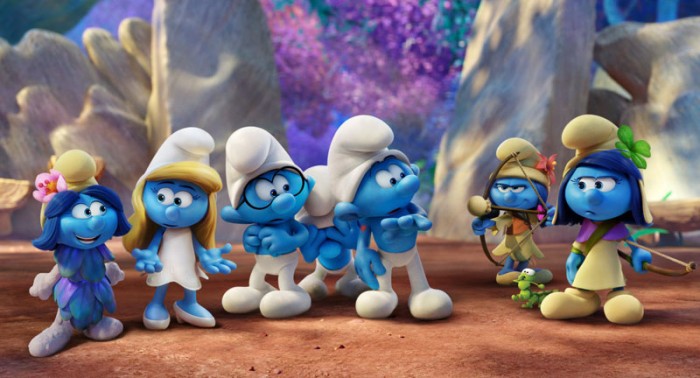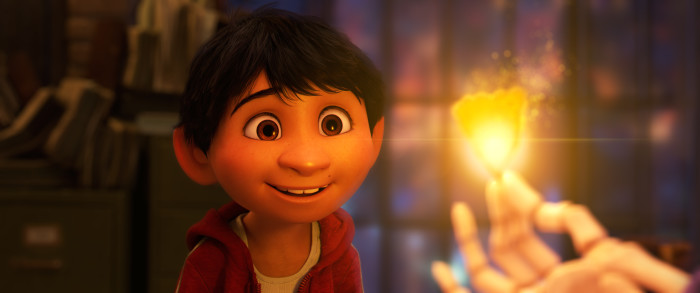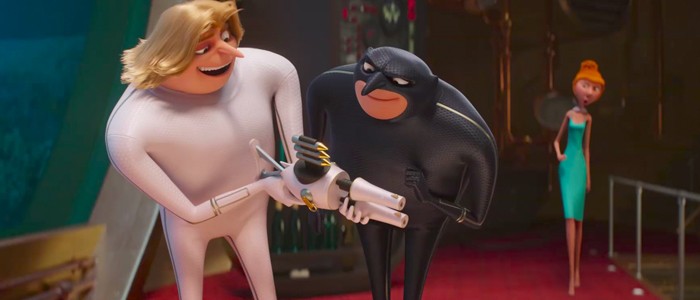Why Were So Many Major Animated Movies So Bad In 2017?
When I sat down to compile a list of the best animated movies of 2017, I realized that the selection was shockingly meager. Outside of Pixar and Disney, animation has never been the pride of Hollywood, often appealing to the lowest common denominator rather than stretching the limits of what animated storytelling can do. That's a job for the foreign animated flicks or for the arthouse indie films. Mainstream animated films only have to keep kids occupied while their parents run errands.
But there was something exceptionally horrible about 2017's mainstream animated offerings. Aside from Coco, Cars 3, and The Lego Batman Movie, Hollywood has had a pretty bad year for animated movies. Don't remember what came out this year? The Emoji Movie, The Boss Baby, and Smurfs: The Lost Village, just to name a few. Now you see what I mean.
Compared to last year, which boasted fantastic widely released films from high-profile studios like Disney's Moana and Zootopia and smaller studios like Laika's Kubo and the Two Strings, this year's wide-release animated movies have little in the way of critical acclaim. How can there be such a difference in quality in one year? Let's dive into it.
Approximately 30 animated films were released in the U.S. in 2017. For the sake of this article, I'm not including films that were released internationally in 2017 but won't premiere in U.S. theaters until 2018 (sorry Godzilla: King of Monsters fans). However, I will be counting films that are on the 2018 Oscars shortlist, which include films that have had a limited U.S. release like Mary and the Witch's Flower or Birdboy.
The Good, the Bad, and the Really Bad
Let's start with the silver linings to the dark cloud looming over animation this year. Coco is a phenomenal, affecting film that was heralded a creative comeback for Pixar, after the leading animation studio saw a brief creative plateau in the past few years with the middling streak of Monsters University, The Good Dinosaur, and Finding Dory (Inside Out being the exception). Coco, with its reverence of Mexican culture and stirring tale about family is easily the best wide-release animated film this year, followed closely by the uproarious The Lego Batman Movie. Lego Batman (which was a spin-off of the surprise 2014 hit The Lego Movie) and the equally solid Cars 3 (an entry into Pixar's least-loved series), prove that not all is hopeless with sequels.
And there are the cases of foreign films that make their way to U.S. theaters — cerebral Japanese animes like Your Name and In This Corner of the World were standouts, as well as ambitious European films like the Spanish-language Birdboy — in addition to independent releases like Loving Vincent, My Entire High School is Sinking Into the Sea, and The Breadwinner. But they were vastly overshadowed at the theaters, often barely making a blip at the local independent theater chain before vanishing.
Loving Vincent — a gorgeous rotoscope film animated in the style of Vincent Van Gogh's impressionist art — was probably the most widely-released independent animated film, opening in 218 theaters. Compare this to last year's stop-motion Kubo and the Two Strings, which opened in over 3,000 theaters and made $48 million domestically. While Kubo admittedly comes from the same production studio that created hits like Coraline, this illustrates a significant disparity between the mostly generic wide-release films and the audacious, smaller films that may have made a bigger impact if not for their modest theatrical releases.
And are these generic wide-release films really that bad? After subjecting myself to a back-to-back marathon of The Emoji Movie, Smurfs: The Lost Village, The Nut Job 2: Nutty By Nature, and Captain Underpants: The First Epic Movie, I can confirm yes. The Emoji Movie is possibly the worst movie this year, and the embodiment of the shallow, corporate-driven model that has produced this outpouring of awful animated films. A series of clumsily thrown together tropes and plot devices on loan from superior films like Inside Out and Wreck-It Ralph, The Emoji Movie is the studio-imposed formula at its finest. It hails from Sony Animation, the studio also responsible for this year's equally bad Smurfs: The Lost Village and The Star.
It's easy to blame money-hungry studios for this year's slate of bad films, but it's likely a slew of factors. If greedy, corporate studios were the only ones to blame, then all of Hollywood's films would be equally terrible. There's something more to why mainstream animation had a particularly bad year.
Sequel Syndrome
Much like it was argued in hushed whispers that Pixar no longer had its creative spark a few years ago, 2017 was likely the result of a vacillating animation cycle; it's no surprise that three of the highest profile animated movies this year were sequels to 2013 and 2014 hits. Despicable Me 3, Cars 3, The Nut Job 2, Smurfs: The Lost Village, The Lego Batman Movie and The Lego Ninjago Movies are all products of the hits that came before them.
But most of these movies aren't bad by virtue of being sequels: they're bad because they're lazy attempts to cash into the success of the originals. Films like Cars 3 and The Lego Batman Movie were successful because they differed from the formula of their predecessors, while other films only rehashed their last films' plots and tropes in attempt to keep the kids entertained. And it works, because we don't demand anything different. Anyone with a kid — or who at least has babysat one for a few hours — know that children love repetition. They will watch their favorite films on endless repeat, much to the chagrin of their beleaguered parents. The worst sequels only manifest this practice. It's the kid's favorite film again, only with more colors and explosions, and possibly a new pop song.
Despicable Me 3 was one of the highest-grossing movies of the year, racking in over $1 billion worldwide. And I'm sure we're in for at least five more Lego movies. However, it's not animated sequels that are inherently bad, but the way that we approach them: as if they are the inevitable hardship that we have to endure in order to get just a little bit of quiet time with the kids.
The Hollywood Babysitter’s Club
In 2017, animation is still considered a "low" medium by many audiences, critics, and filmmakers. Many see animation as nothing more than a genre made exclusively for children, requiring little more narrative cohesion than a "happily ever after."
But animated movies can be smart. Pixar, Disney, Studio Ghibli, and even a few Dreamworks and Blue Sky Studios films prove just that. Pixar, Disney, and Ghibli consistently make films that can work on several levels and appeal to all audiences — a far harder feat than most live-action films have to accomplish. But at the heart of films like the abstract Inside Out or the trippy Spirited Away, are good, compelling stories. When studios and animators approach films from the story first — and not with the express intention of entertaining kids — that's when we get timeless classics.
To me, animation is one of the most exciting mediums in film. There are no limits to what filmmakers can do in an animated film — only what their imagination can accomplish. Even when they're operating in rigorous techniques like stop-motion, claymation, or rotoscoping, animation filmmakers can test cinematic limits that live-action filmmakers could barely reach, either by budget restraints or just human ability itself. Anime is a wonderful example of this, with Your Name reaching new metaphysical heights within the realm of a mundane, sci-fi story, and In This Corner of the World operating within the brutal realism of World War II Japan and the dreamy landscape of its artistic protagonist. But even anime films, with their limited funds and unforgiving industry, can barely live up to what legendary animator Satoshi Kon was able to do with his rapid, reality-bending shots in films like Millennium Actress and Paprika.
Animators aren't daring to dream anymore, and the ones that do don't have the budget or resources of The Emoji Movie. But there is still hope. Studio Ponoc, a studio founded by Ghibli animator Yoshiaki Nishimura, has kicked off what is hopefully a new era for anime with the vibrant Mary and the Witch's Flower. GKids, a small New York-based distributor behind The Breadwinner, The Girl Without Hands, and more, has pushed for the release of more audacious foreign animated films in U.S. theaters and is starting to move into production.
Maybe 2017 has been a bad year. But the future can only get better — there has to be an emoji for that.


